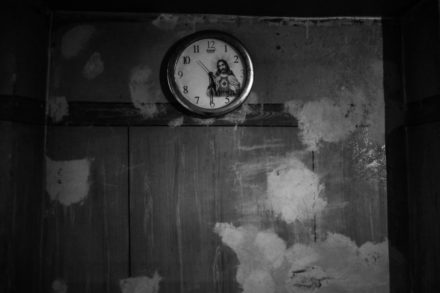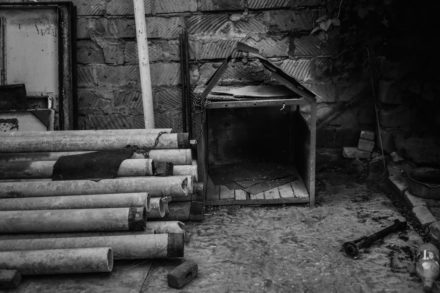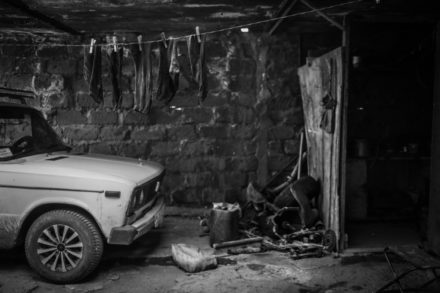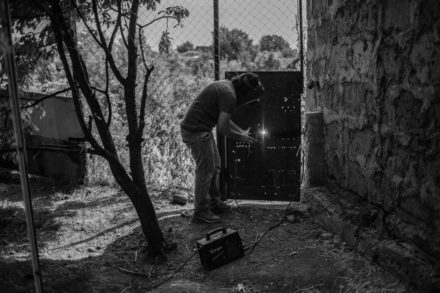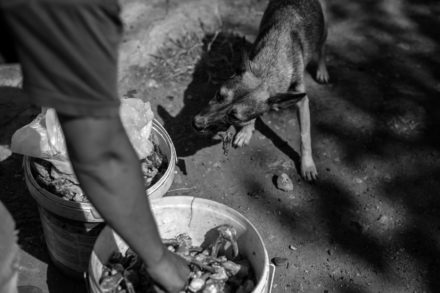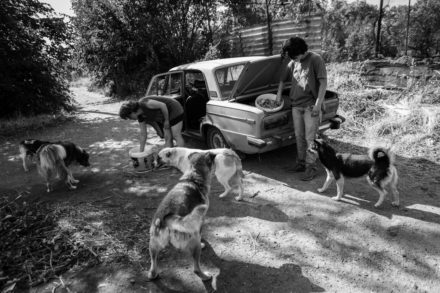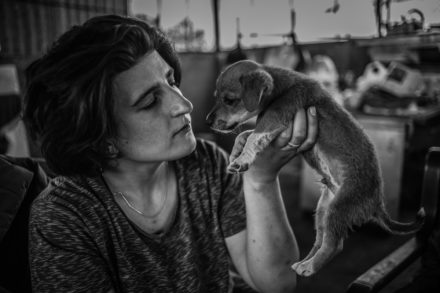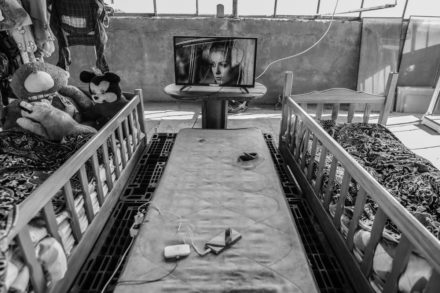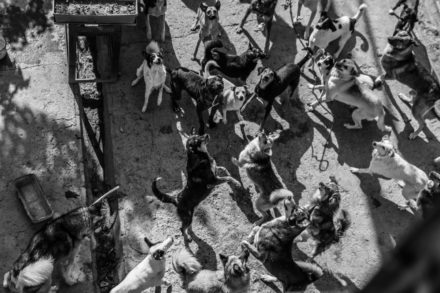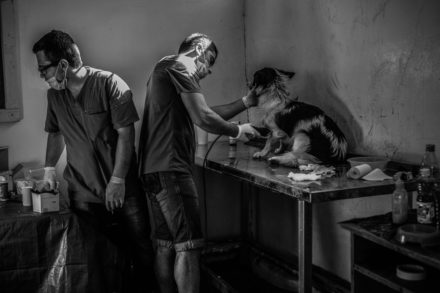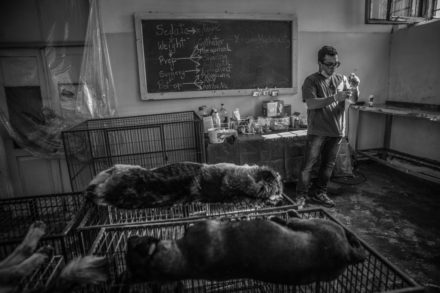Artak Papikyan is a farmer with a farm of cows, goats, pigs. He says he has always kept a dog. There are many dangers in the mountains, a trustworthy dog is always a necessity.
“I was going to work, and my dogs was accompanying me as usual. I reached my working place, my dog turned to go back home, he approached several stray dogs. At that moment a car stopped, and they shot my dog out. He fell down, I ran to him, took him into my hands. He was already dead. My eyes blackened, I fainted.”
Artak’s dog was killed right before his eyes, and he was in nervous breakdown for a long time.
Thirty years have passed since this incident, but the methods of dog neutralisation have not changed in Gyumri.
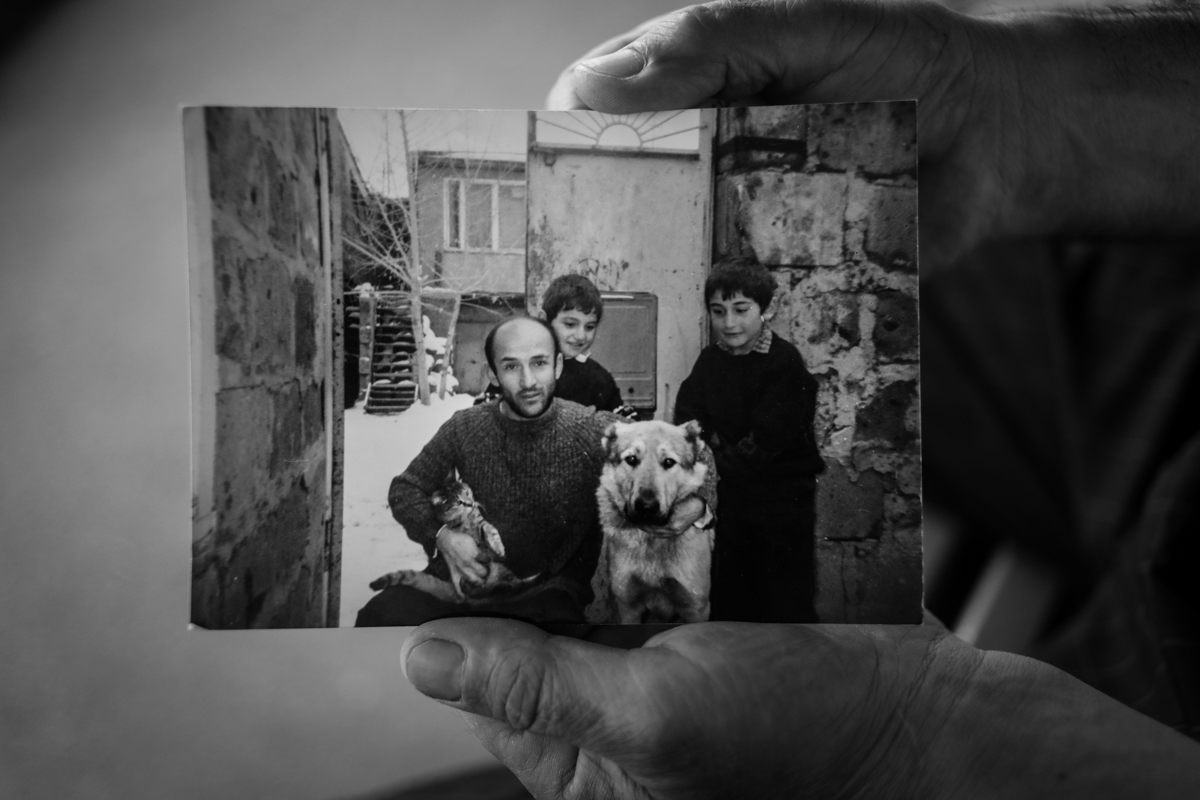
Artak Papikyan’s photo, where he is with his dog. Artak’s dog was shot out 30 years ago.
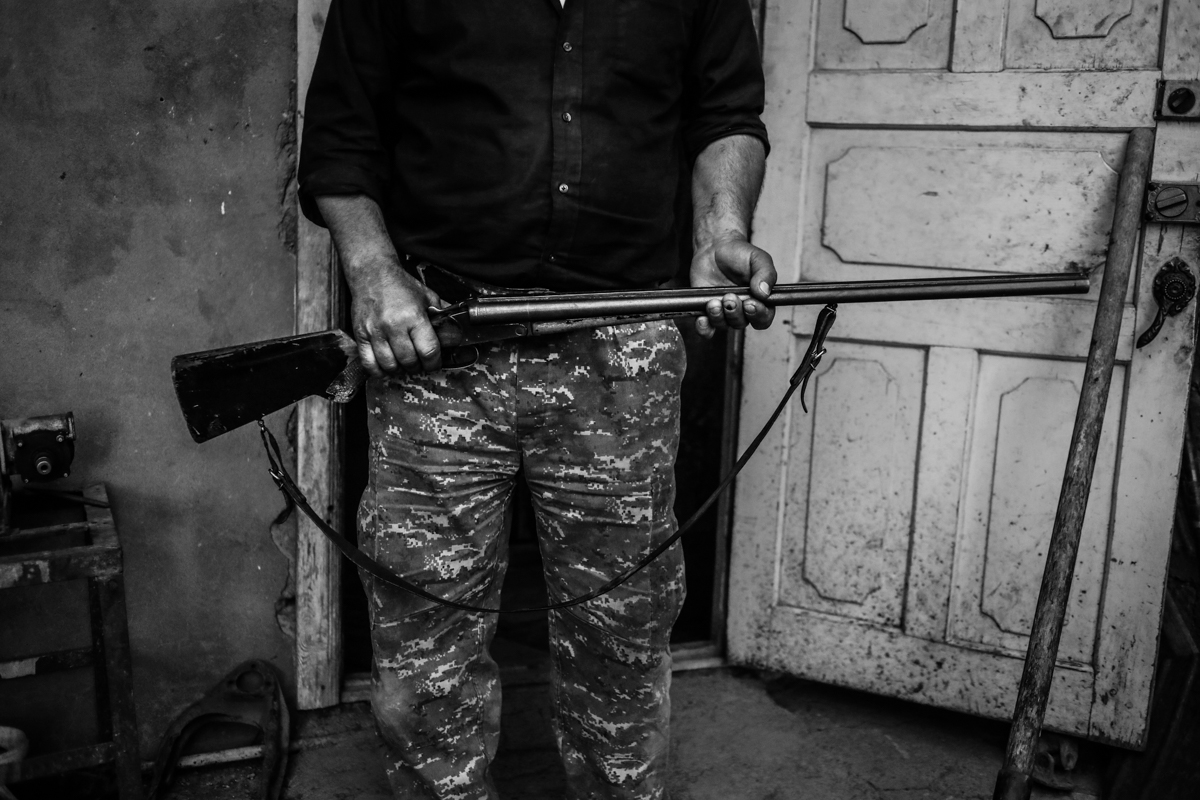
A. works in the municipality in the position of a “hunter of stray dogs” since July 1 of 2014.
“They were persuading me for a long time, I didn’t agree,” says A.. He says he has issues with banks, he rents a house (his house was destroyed by the earthquake, and he hasn’t received a new one), and he has agreed because of the social situation.
“I know what I do is terrible.” He says he loves dogs a lot, he has kept dogs himself. “Last time I went to shoot a dog, he looked me in the eyes, I was not able to shoot, I took the gun down, he came and licked my hands.”
According to A. they call him to work at night too, but he doesn’t shoot when its dark, he feels responsible for the bullet. He is also attentive when shooting. He doesn’t shoot dogs with neck collars, breeded or calm dogs. “Even if a thousand people complain, I won’t shoot.”
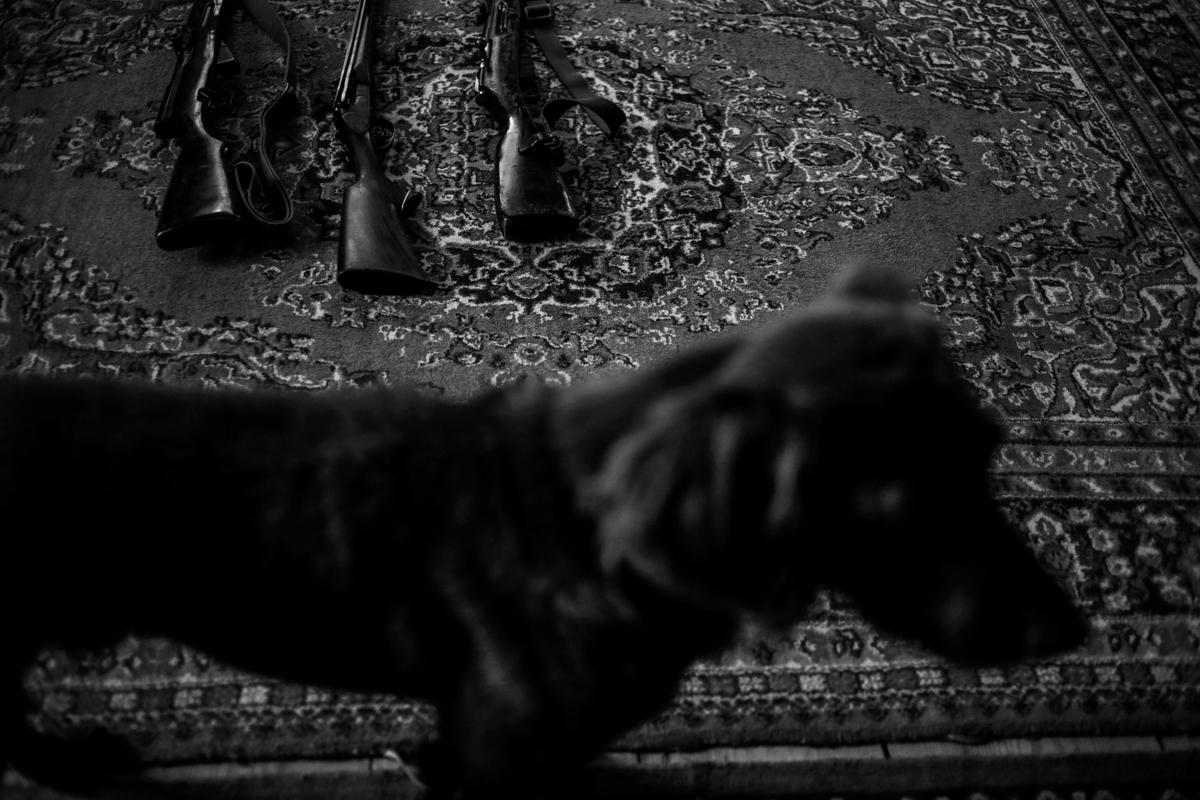
Hovhannes Khnusyan (the director of the NGO “Union of Hunters and Environmentalists Aghavnabaze”) considers the slaughter of dogs unacceptable.
“Shooting a dog out is a vice,” says Hovhannes, but he thinks that the problem won’t be solved by neutralising all the dogs of the city, after some time dogs will come from the surrounding villages, people often throw the puppies of their dogs out. He calls to dog owners to be more responsible, and indicates that if they buy a breeded dog and pay money, they won’t throw them out easily.
The NGO director is concerned with the status of the hunters. He says when they shoot out dogs, people don’t blame the municipality or the community, they blame the hunter, but he is just a tool in this case.
“It’s not that the hunters are vandals,” says Khnusyan.
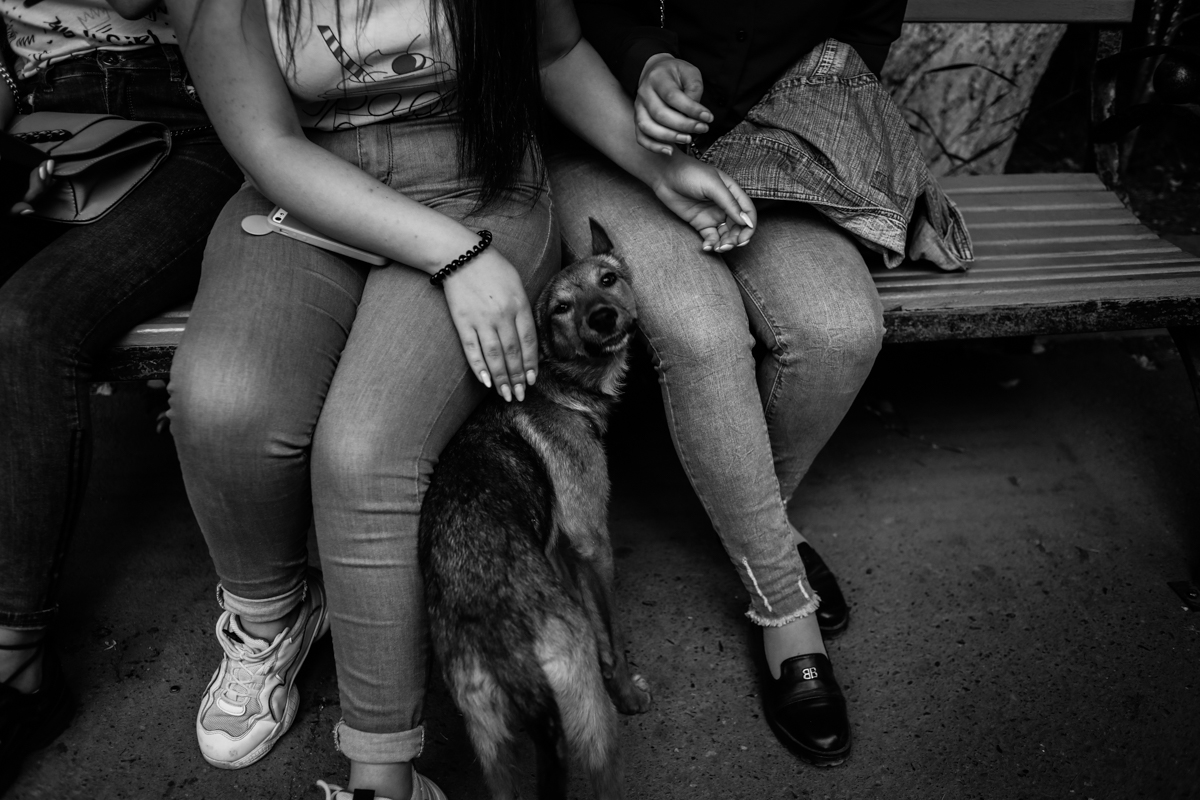
Stray dogs in the streets of Gyumri.
Almost every day they shoot in the streets of Gyumri, in the center and in the suburbs, in yards and squares. Activist environmentalists complain, call to the municipality, but, as it turns out, it is the municipality contractual worker – a hunter of forty years experience – who shoots the dogs out according to the contract. He receives 1100 AMD (taxes included) for each killed dog.
The hunter, who has the right of carrying a gun, but doesn’t have the right of using it in populated areas, violates the law every day risking the lives and estates of people, but he just does his job. It’s already thirty years that the municipality uses the practice of recruited hunters, who go after stray aggressive dogs, but the same hunter assures, that neither the quantity of dogs, nor their aggression has decreased.
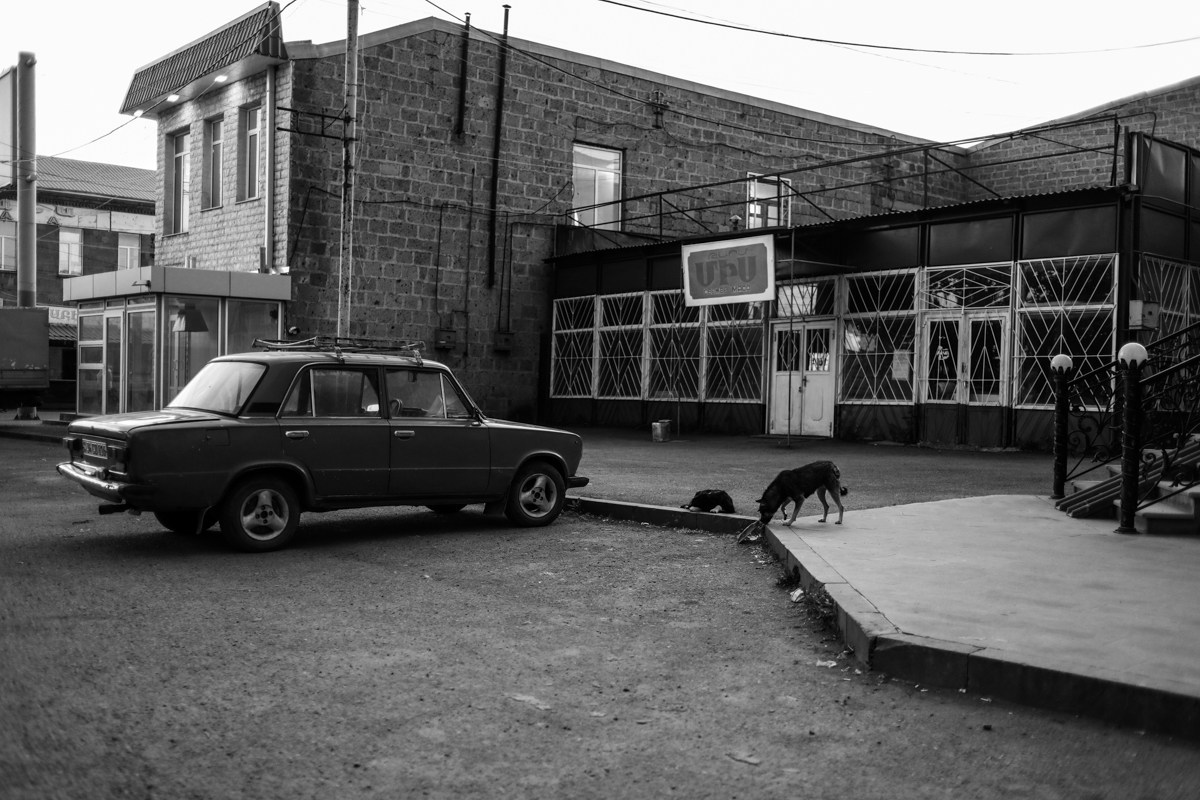
Stray dogs in the streets of Gyumri.
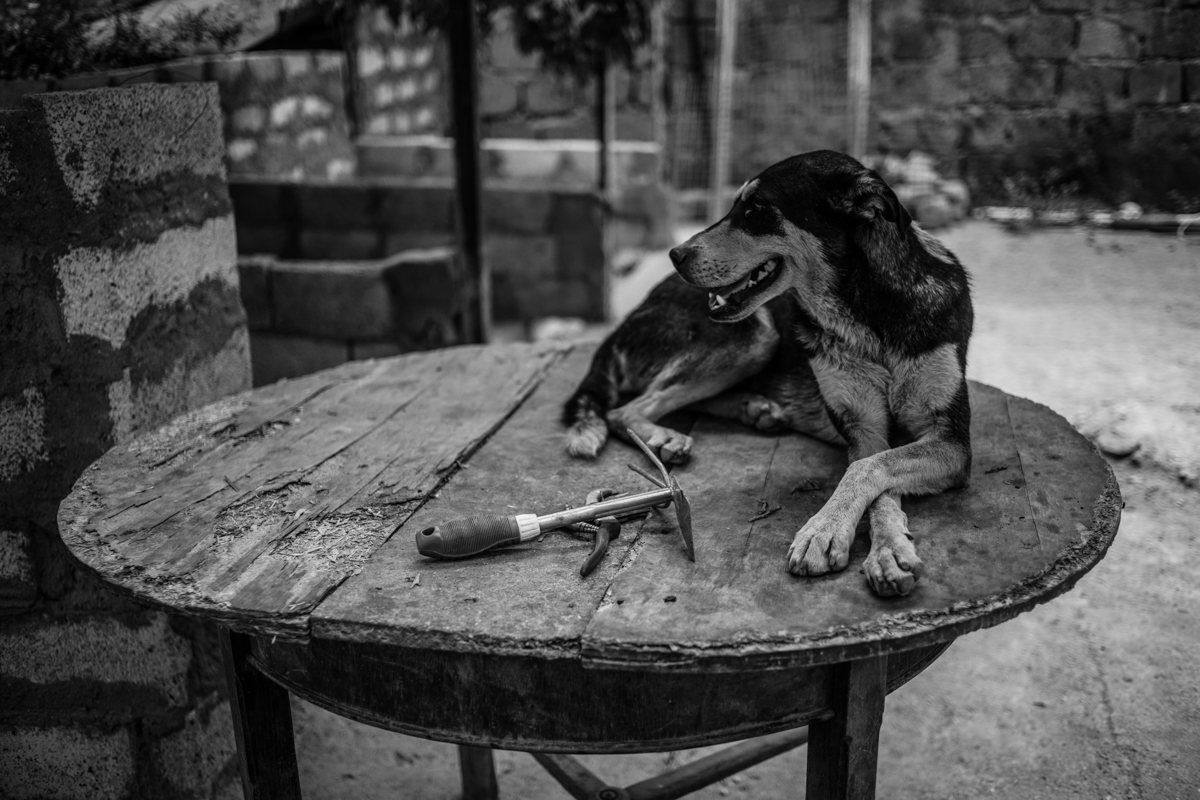
Anna Vardanyan is also from Gyumri, she lives in Kharberd now with her brother Georgi and mother Naira. Anna keeps 49 dogs in her yard, which have been rescued from the streets. They take them regularly to vets with different health issues. The family cares for the expenses of their food and medical needs. Anna is very attached to her pets. She is a volunteer in Ushi, she is a therapeutist and says that children with different disabilities recover after their interaction with dogs and horses. Anna accepts the decision of sterilization of dogs in Yerevan. She says she didn’t believe in it in the beginning, but now she sees that this practice functions, she hopes it will continue.
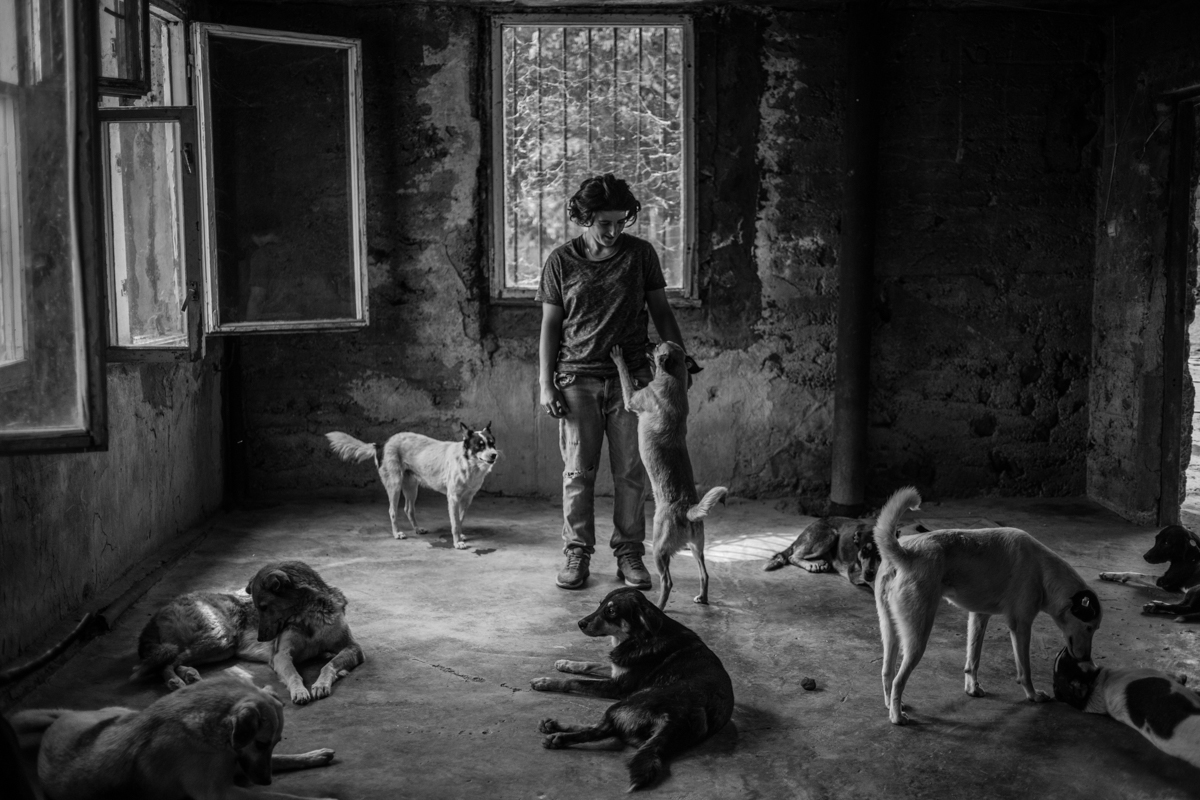
Now, besides her 49 dogs, she feeds the dogs in her neighborhood, she recognizes all of them, they have names. She says that the dogs appear in her shelter in different ways. The children of the neighbors may find poor, ill dogs, and they always know where to take them. It happens also that people on vacation come with their dogs and “forget” their pets when going back.
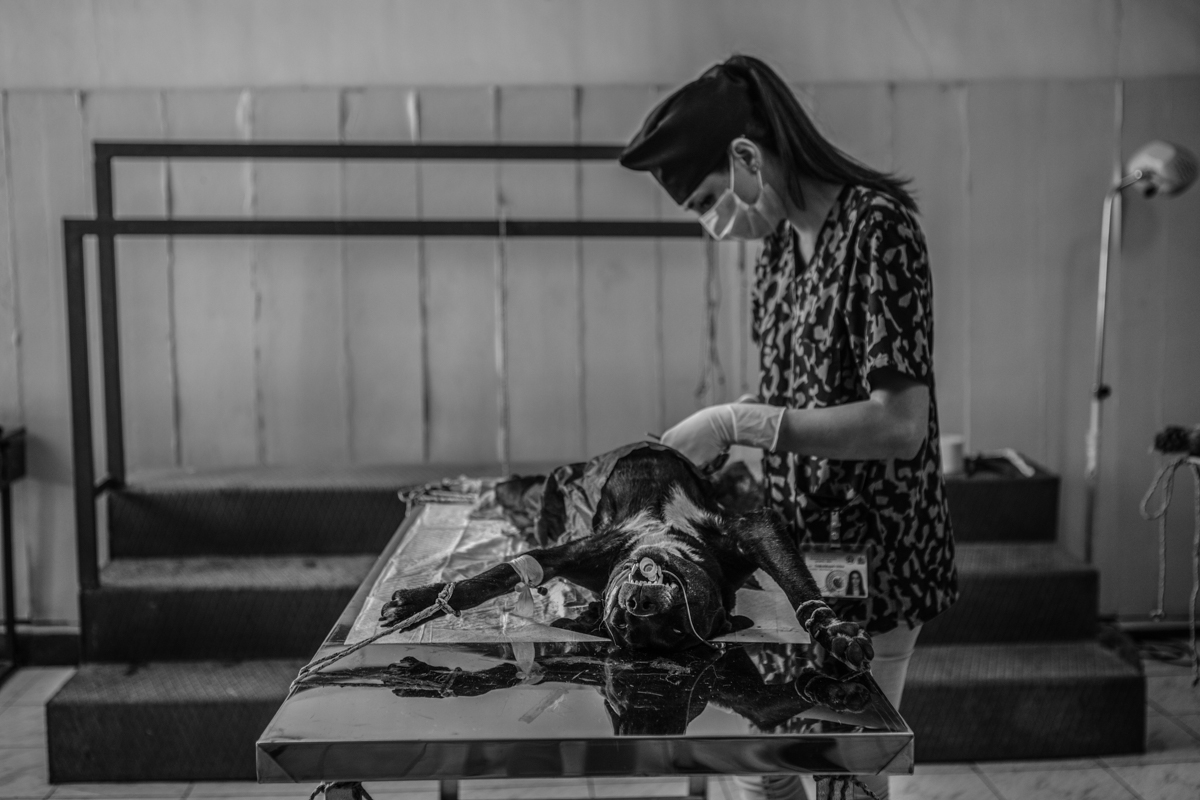
The sterilization center of the municipality Yerevan works since March 13, 2019. Over 1000 dogs have been sterilised already, no post surgery complications have been detected, 21 cases of euthanasia have been recorded, because of incurable diseases. All the sterilised dogs were set free in the same spot where they had been caught from.
In Yerevan the problem of stray dogs was being solved by slaughter. In December of 2018 the mayor Marutyan has reassured that the “shameful practice” of animal slaughter is in the past. In 2019 Yerevan municipality has initiated its own center of neutralizing the dogs, which means they will be sterilised and set free. But these changes have not reached the second city of Gyumri.
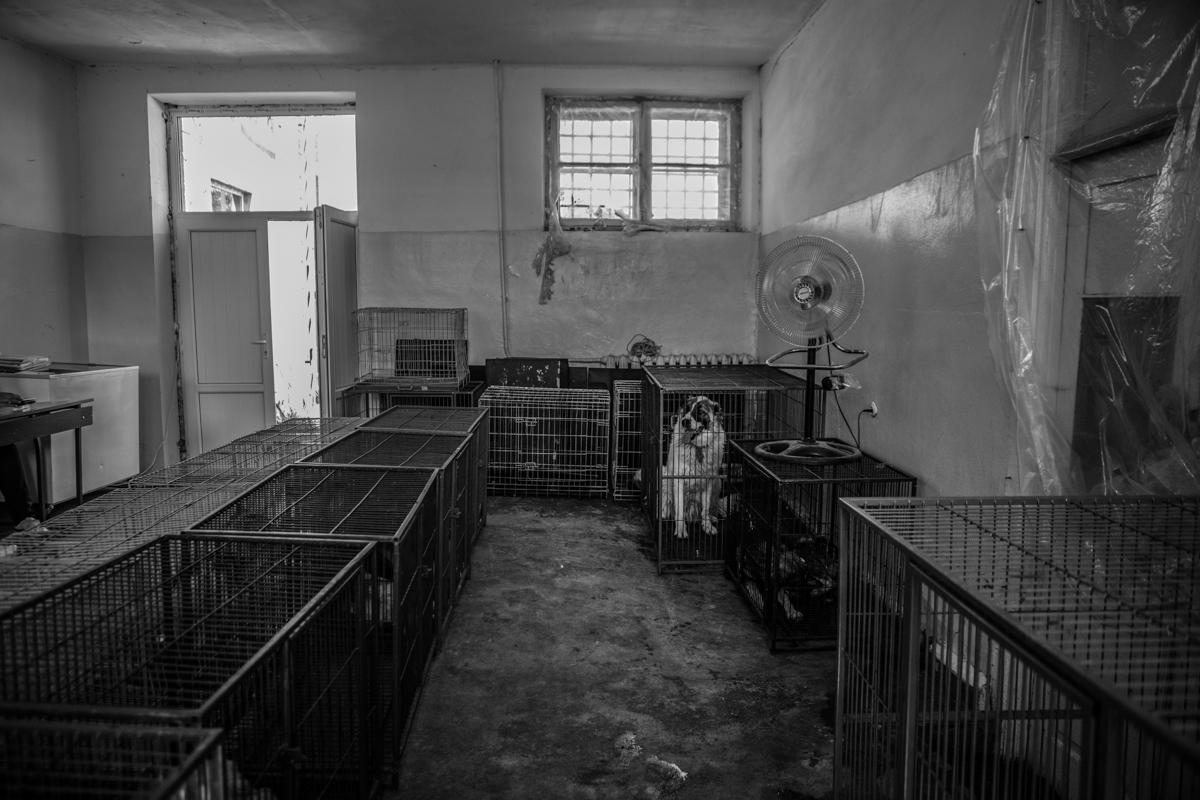
Now they are constructing a center and they will move there in a month, where, besides the sterilization, there will be a small shelter for dogs and an open air space, where people will be able to visit and adopt dogs.
“This photo story was funded through a Department of State Public Affairs Section grant, and the opinions, findings and conclusions or recommendations expressed herein are those of the Author(s) and do not necessarily reflect those of the Department of State.“



